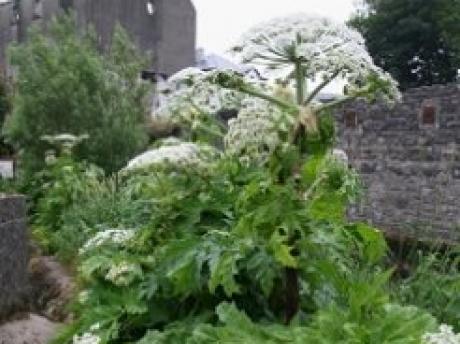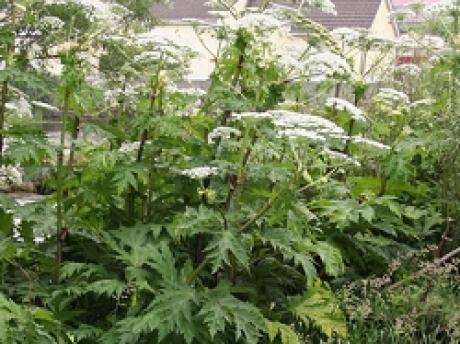Description
This plant can grow to up to around 4 metres tall and can be found mostly along river banks and damp ground. It was introduced to Ireland as an ornamental plant over a century ago. It has huge leaves that can be around 1.5 metres across and tiny white flowers that are spread like an umbrella at the top of the stem.
Problems associated with this species include:
- It is a health hazard! - The plant produces a sap that can cause extreme blistering to the skin, particularly in the presence of direct sunlight.
- Loss of biodiversity as native species are shaded out
- Increased erosion as it stops plant growth beneath it in the summer and dies back in winter leaving bare river banks open to erosion
- The combination of its large size, associated health hazards and fondness of river banks means that it reduces riverside access where it becomes a problem.

